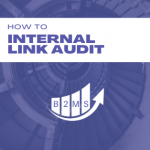Shopify Meta Description that increases SEO and Sales
In this blog post, we will learn what a meta description is, how it impacts SEO, what a good meta description looks like, and how you can implement one today.
First, we need to understand what a meta description is and how it impacts organic search results.
What is a Shopify meta description?
A meta description is a short text that occurs in search results under the clickable title tag. The meta description should provide enough information that the user is confident that the site will solve her search but also create curiosity to encourage the user to click to your Shopify eCommerce store.

Meta Description SEO Myth
A common misconception is that meta descriptions are an SEO ranking factor. In fact, the meta description has only a technical and indirect impact on Search Engine Optimization.
Frankly, for Google and Co it doesn’t matter what you write in the meta description as long as it’s unique and within the character limits. However, meta descriptions impact the Click-through-Rate (CTR) and therefore indirectly SEO results.
Shopify Meta Description Guidelines and Best Practices
On-Site SEO can hurt a website but it’s also a great opportunity to get rewarded. The meta description is one of these areas. If you check the guidelines, search engines will not penalize your shop due to an unhealthy site.
On-Site SEO Meta Description Guidelines
- Shopify meta description has to be unique for each indexed page. That means no duplicated meta texts across your entire domain.
- No empty meta descriptions
- Minimum length: 50 characters
- Maximum length: 160 characters
Shopify Meta Description Best Practices
While it does not increase the keyword relevancy to include keywords in the meta description from an SEO perspective, it’s best practice to use the search phrase and related terms to describe the page. This is mainly due to the fact that Google, for instance, highlights the search term in bold to guide the user.

As seen in the screenshot above, the search term doesn’t have to be the exact match to be bold within the meta description.
A good way to analyze your meta descriptions is Google Search Console. You can see what the CTR for each page or search query is. (Of course, this only works for already active pages). If you find that you have a lower CTR for certain keywords you can include that keyword in the meta description and/or title tag to boost the CTR for that very search term.
For new pages without any history, refer to your keyword research and include long-tail keywords and search questions in the meta description to match the intent of the user.
How do you make a good meta description and title that sells?
If you stick to the basics of having a unique meta description with a length between 50 and 160 characters you are off to the races. The goal of the title tag is to include the main keyword and grab the user’s attention. Questions or bold statements with active language work great.
Site note: Stay between 35 and 57 characters (maximum 60 char) for your title tag’s length. Have it unique and not the exact same as your H1 on the site. Formerly, 70 characters were allowed but it’s recommended to shorten your title tags.
For Shopify stores, the goal is not just to get the click from the search engine but also to convert the user into a customer. The title should solve a problem or offer a solution. SEO work has usually a very high Return-on-Investment as organic driven sales will decrease your overall cost per order (CPO).
The Shopify meta description is there to support the title tag with further information and an incentive to click. The meta description is a great place to include long-tail keywords and rephrase a question used in the title tag to a statement or vice versa.
You can also add category terms of your products or solutions as they are defined by Google, for example, in the Google My Business listing for your Shopify Store.
Shopify title and meta description example
Title tag: Do your nails break often? Increase nail health in 7 days
Meta: Nailpolish that increases the strengths of your nails in 7 days. Healthy nails in various colors. Prevent nails from breaking. New fall colors just arrived.
(btw, I don’t know anything about nails and nailpolish so the information might be wrong, but you get my point)
How do I add meta keywords to Shopify?
A common question is how to add meta keywords to Shopify. The devil lies in the details. Meta keywords should not be confused with meta descriptions. While it’s best practice to include your keywords in the meta description to show search relevancy and boost CTRs, it will not impact your ranking for that term.
You should add your targeted keywords in the following areas to boost your Shopify SEO:
- Page SEO Title tag
- Headlines (in HTML code classified as <h> tag)
- Organically in the content/product description
- Image title and image alt attributes
- Anchor texts when linking to that page internally and externally
- 1x marking as bold text (HTML <strong> tag is better than <b>)
- URL (important: only update the URL of existing posts or products if it’s absolutely necessary)
How to edit Shopify SEO settings
As the Shopify admin, you can edit website SEO of the product pages, homepage meta description, and general online store preferences in multiple ways. Each page title and meta can be adjusted in the Online Store -> Preferences of the page/product.

Sascha is a Lifecycle Marketing Consultant with over 8 years of digital marketing experiences in Silicon Valley, the UK, and Germany.
After leading the demand generation for a 100+ million company, he decided to venture out on himself. He’s now helping clients to attract and convert more leads and customers.
His main focus are SEO, paid media & marketing automation – all with the focus to tie marketing campaigns to revenue.
Sascha has been featured in industry publications.




